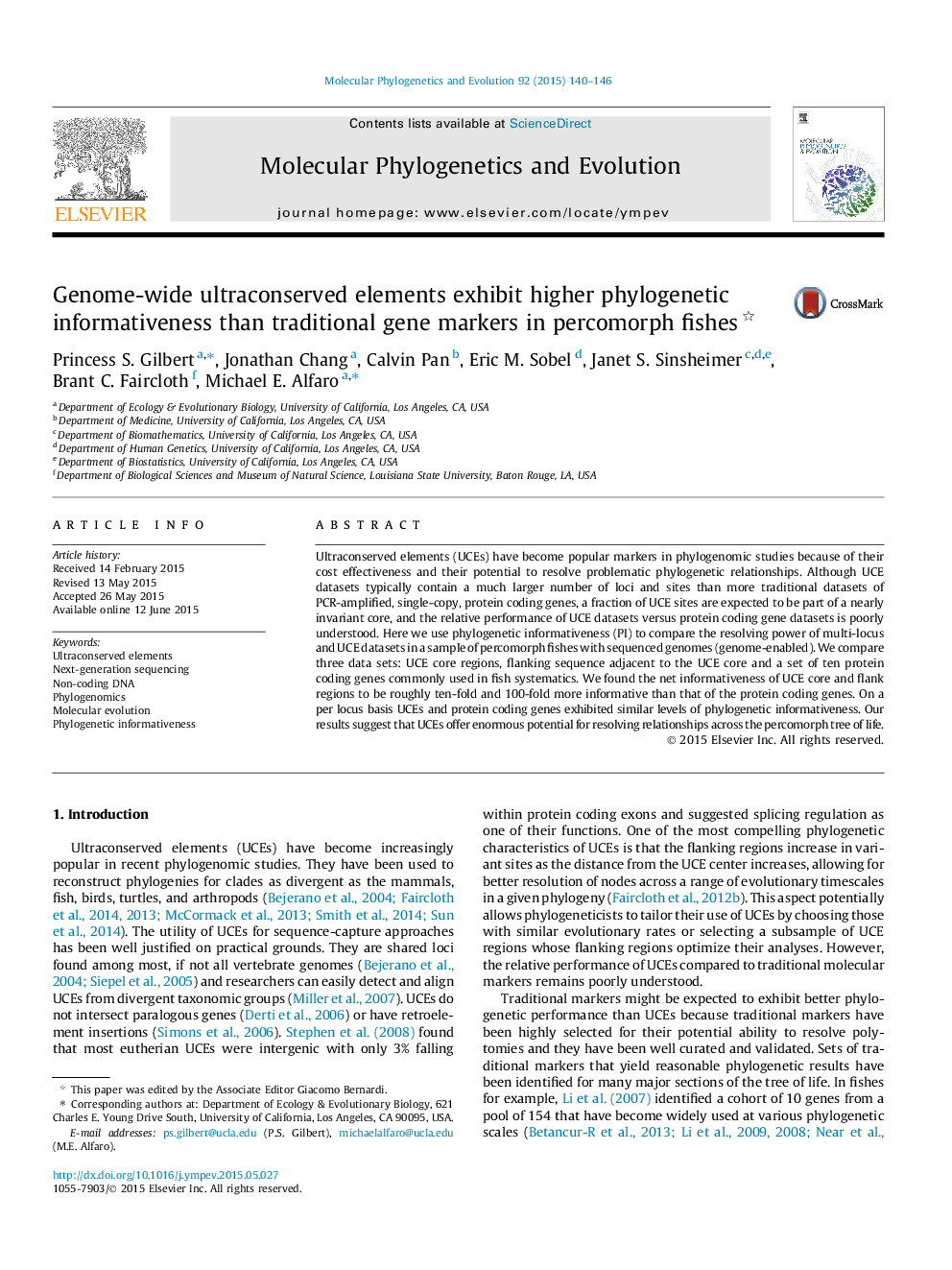| Article ID | Journal | Published Year | Pages | File Type |
|---|---|---|---|---|
| 5918777 | Molecular Phylogenetics and Evolution | 2015 | 7 Pages |
â¢UCEs outperform gene regions in aggregate as well as at the per locus level.â¢The majority of the PI of UCEs comes from their flanking regions.â¢UCE core regions are highly conserved across distant taxa but still carry some PI.â¢If the UCE core has high PI, then the corresponding flank tends to have high PI.
Ultraconserved elements (UCEs) have become popular markers in phylogenomic studies because of their cost effectiveness and their potential to resolve problematic phylogenetic relationships. Although UCE datasets typically contain a much larger number of loci and sites than more traditional datasets of PCR-amplified, single-copy, protein coding genes, a fraction of UCE sites are expected to be part of a nearly invariant core, and the relative performance of UCE datasets versus protein coding gene datasets is poorly understood. Here we use phylogenetic informativeness (PI) to compare the resolving power of multi-locus and UCE datasets in a sample of percomorph fishes with sequenced genomes (genome-enabled). We compare three data sets: UCE core regions, flanking sequence adjacent to the UCE core and a set of ten protein coding genes commonly used in fish systematics. We found the net informativeness of UCE core and flank regions to be roughly ten-fold and 100-fold more informative than that of the protein coding genes. On a per locus basis UCEs and protein coding genes exhibited similar levels of phylogenetic informativeness. Our results suggest that UCEs offer enormous potential for resolving relationships across the percomorph tree of life.
Graphical abstractDownload full-size image
